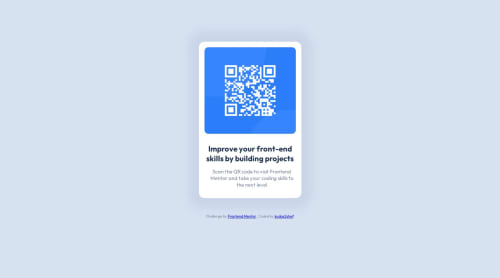Submitted over 2 years agoA solution to the QR code component challenge
HTML CSS FLEXBOX
accessibility
@kudos2Shef

Solution retrospective
Hi, My second challenge so far. Curious to know how to write efficient HTML/CSS code. Feedback are welcome!
Code
Loading...
Please log in to post a comment
Log in with GitHubCommunity feedback
No feedback yet. Be the first to give feedback on kudos2Shef's solution.
Join our Discord community
Join thousands of Frontend Mentor community members taking the challenges, sharing resources, helping each other, and chatting about all things front-end!
Join our Discord